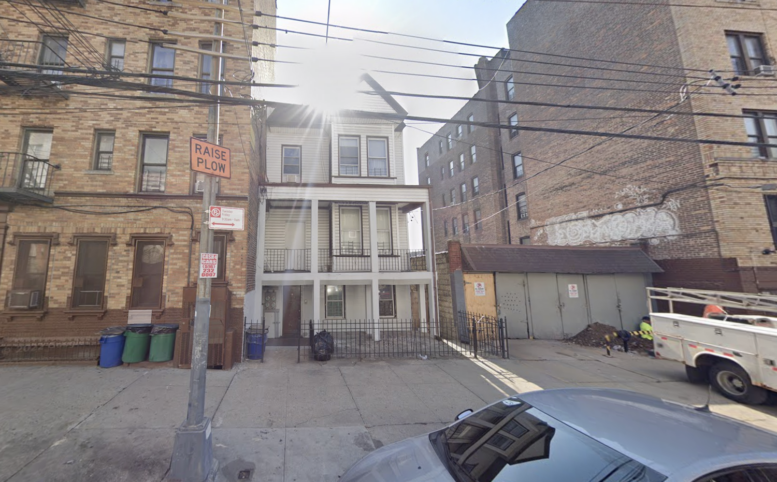
Discount Provided to Residential and Non-Residential Electric and Gas Customers
More Than $1.4 Billion in Assistance Available to Energy Utility Customers in 2024
Governor Kathy Hochul today announced that the New York State Public Service Commission adopted a $200 million New York State energy bill credit to be administered by the large electric and gas utilities on behalf of their customers. The energy bill credit is a one-time credit using State-appropriated funds to provide energy bill relief to more than 8 million directly metered electric and gas customers. With today’s action, more than $1.4 billion has been or will be made available to New York consumers to help offset energy costs in 2024.
“Every New Yorker deserves affordable and clean energy, which is why I fought to secure additional funds to provide financial relief for hardworking families,” Governor Hochul said. “Energy affordability continues to be a top priority in my clean energy agenda and this utility bill credit is just one of many actions New York is taking to reduce costs for our most vulnerable New Yorkers.”
The program, proposed by the Energy Affordability Policy working group, provides that the $200 million appropriation included in the FY24 State Budget will be allocated to customer accounts through a one-time credit within roughly 45 days of the utilities receiving budget funds. This utility bill relief builds on several other key energy affordability programs administered by New York State, including $380 million in energy assistance program (EAP) funding for consumers through utilities, $360 million in Home Energy Assistance Program (HEAP) funding, $200 million in EmPower+ funding through the State Budget, over $200 million in ratepayer funding to provide access to energy efficiency and clean energy solutions for low-to -moderate income (LMI) New Yorkers through the Statewide LMI portfolio and NY Sun, and more than $70 million annually through the Weatherization Assistance Program (WAP).
The Department of Public Service (DPS), in consultation with the Energy Affordability Policy working group, was tasked with designing a utility bill relief program related to the costs of utility affordability programs in recognition of energy commodity cost increases and the costs of utilities' delivery rate increases. The working group considered multiple proposals over several months to effectuate the desired relief. The majority of the working group agreed to the staff proposal after several key modifications and recommended the PSC implement a one-time energy bill credit that would primarily benefit residential and small business electric and gas customers.
The Energy Affordability Policy working group is made up of leading consumer groups and advocates, municipalities, relevant state agencies, and utilities in New York.
In addition to the energy bill credit funds and EmPower+, New York State programs offer funding and technical assistance that can assist homeowners, renters, and businesses manage their energy needs. This includes:
- Apply for HEAP: As of November 1, applications were being accepted for the Home Energy Assistance Program (HEAP) which can provide up to $976 to eligible homeowners and renters depending on income, household size and how they heat their home (e.g., family of four with a maximum monthly gross income of $5,838 can qualify). For more information visit NYS HEAP.
- Energy Affordability Program/Low Income Bill Discount Program: This program provides income-eligible consumers with a discount on their monthly electric and/or gas bills, as well as other benefits, depending on the characteristics of the particular utility's program. New Yorkers can be enrolled automatically if they receive benefits from a government assistance program. For more information, they should visit their utility website or links can be found at DPS Winter Preparedness.
- Community-based Service Programs: Service organizations and local community agencies provide financial aid, counseling services and assistance with utility emergencies. New Yorkers can contact organizations like the American Red Cross (800-733-2767), Salvation Army (800-728-7825), and United Way (2-1-1 or 888-774-7633) to learn more.
- Receive a customized list of energy-related assistance in the State: New York Energy Advisor can help income-eligible New Yorkers locate programs that help them spend less on energy and create healthier and more comfortable spaces. With New York Energy Advisor, consumers answer simple questions and get connected with energy-saving offers in New York State. Sponsored by NYSERDA and utilities, qualified New Yorkers can get help paying utility bills, receive special offers on heating assistance, and more.
- EmPower+: Income-eligible households can receive a home energy assessment and no-cost energy efficiency upgrades through the EmPower+ program, administered by NYSERDA. Get more information about the program, including information on how to apply at https://www.nyserda.ny.gov/All-Programs/EmPower-New-York-Program.
- Weatherization Assistance Program (WAP): Administered by New York State Homes and Community Renewal, WAP provides income-eligible households with no-cost weatherization services. Rental properties can also be served, though there are additional requirements for owners of rental properties. For more information on WAP, including how to apply, visit https://hcr.ny.gov/weatherization-applicants.
New York State's Nation-Leading Climate Plan
New York State's nation-leading climate agenda calls for an orderly and just transition that creates family-sustaining jobs, continues to foster a green economy across all sectors and ensures that at least 35 percent, with a goal of 40 percent, of the benefits of clean energy investments are directed to disadvantaged communities. Guided by some of the nation’s most aggressive climate and clean energy initiatives, New York is on a path to achieving a zero-emission electricity sector by 2040, including 70 percent renewable energy generation by 2030, and economywide carbon neutrality by mid-century. A cornerstone of this transition is New York's unprecedented clean energy investments, including more than $40 billion in 64 large-scale renewable and transmission projects across the state, $6.8 billion to reduce building emissions, $3.3 billion to scale up solar, nearly $3 billion for clean transportation initiatives, and over $2 billion in NY Green Bank commitments. These and other investments are supporting more than 170,000 jobs in New York’s clean energy sector as of 2022 and over 3,000 percent growth in the distributed solar sector since 2011. To reduce greenhouse gas emissions and improve air quality, New York also adopted zero-emission vehicle regulations, including requiring all new passenger cars and light-duty trucks sold in the State be zero emission by 2035. Partnerships are continuing to advance New York’s climate action with 400 registered and more than 100 certified Climate Smart Communities, nearly 500 Clean Energy Communities, and the State’s largest community air monitoring initiative in 10 disadvantaged communities across the State to help target air pollution and combat climate change.




